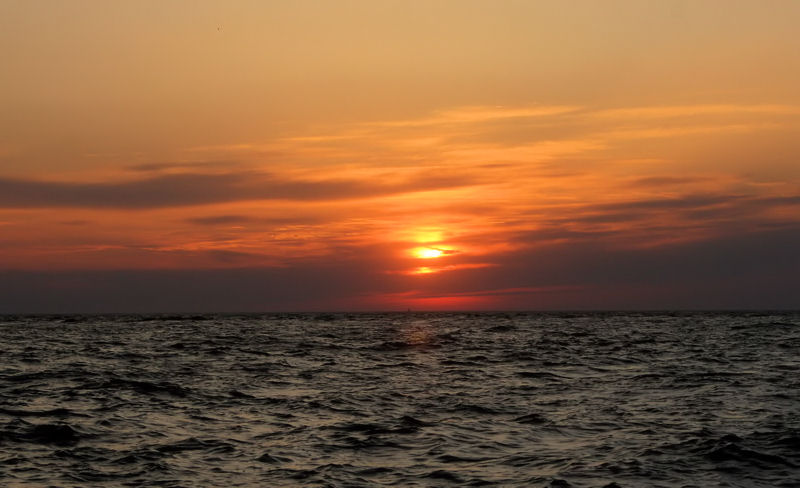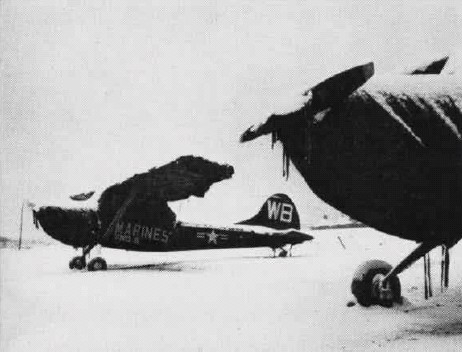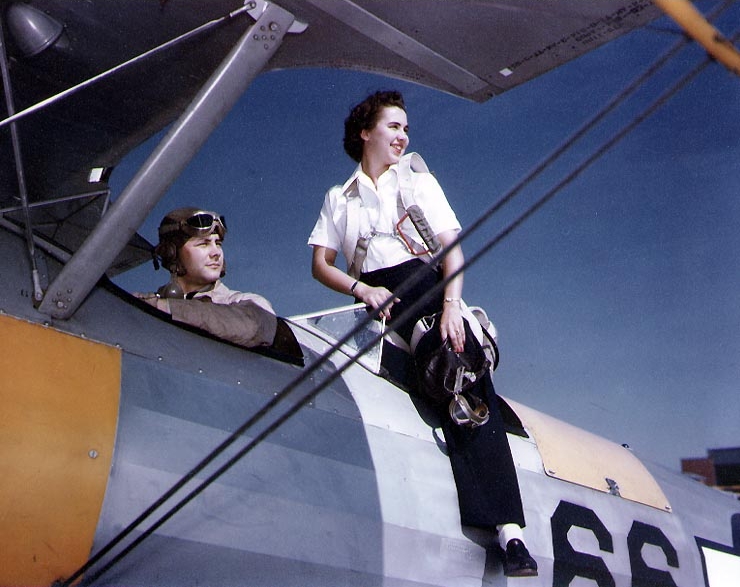|
Naval Air Station Wildwood Aviation Museum
The Naval Air Station Wildwood Aviation Museum is an aviation museum located at the Cape May Airport in Lower Township, New Jersey, Lower Township, in Cape May County, New Jersey, Cape May County, New Jersey, United States. History The Cape May Airport, which hosts the museum, was originally constructed by the U.S. Navy from 1941 to 1942. Commissioned in April 1943 as Naval Air Station Rio Grande, the field was so named due to its proximity to the community of Rio Grande, New Jersey. Due to problems with mail, telegram and telephone service, caused in part by confusion with Rio Grande City, Texas, the Navy opted to rename the airfield as Naval Air Station Wildwood in June 1943. In the mid-1990s, Dr. Joseph Salvatore purchased Hangar #1, which was then in a dilapidated condition. The museum is located in the airport's Hangar #1, which is typical of the design of many U.S. Navy and U.S. Marine Corps aircraft hangars of the 1940s, many of which are still in use today at both acti ... [...More Info...] [...Related Items...] OR: [Wikipedia] [Google] [Baidu] |
Lower Township, New Jersey
Lower Township is a township in Cape May County, in the U.S. state of New Jersey. It is part of the Ocean City metropolitan statistical area, which covers the entire county for statistical purposes. As of the 2020 U.S. census, the township's population was 22,057, a drop of 809 from the 2010 census count of 22,866, which reflected a decrease of 79 (−0.3%) from the 22,945 counted in the 2000 census. '' New Jersey Monthly'' magazine ranked Lower Township as its 34th best place to live in its 2008 rankings of the "Best Places To Live" in New Jersey. The township is part of the state's South Jersey region. History Before the region was settled by Europeans, the Kechemeche tribe of the Lenape Native Americans inhabited South Jersey, and traveled to the barrier islands during the summer to hunt and fish.Snyder, John P''The Story of New Jersey's Civil Boundaries: 1606-1968'' Bureau of Geology and Topography; Trenton, New Jersey; 1969. p. 118. Accessed October 16, 2012.Holden, Rob ... [...More Info...] [...Related Items...] OR: [Wikipedia] [Google] [Baidu] |
Stearman NASW , a surname
*
{{surname, Stearman ...
Stearman is a surname. Notable people with the name include: * Lloyd Stearman (1898–1975), American aviation pioneer * Richard Stearman (born 1987), English footballer * William Stearman (1813–1846) English cricketer * William L. Stearman (born 1922), American government official, aviator and author See also * Stearman Aircraft, a company founded by Lloyd Stearman ** Boeing-Stearman Model 75, a Stearman Aircraft biplane trainer commonly known eponymously as a Stearman *Sterman, a surname *Stermann Stermann is a surname. Notable people with the surname include: *Catherine Stermann (1949–1985), French actress *Dirk Stermann (born 1965), German comedian of the duo Stermann & Grissemann See also *Sterman Sterman is a surname. Notable people w ... [...More Info...] [...Related Items...] OR: [Wikipedia] [Google] [Baidu] |
Lockheed T-33A Shooting Star
The Lockheed T-33 Shooting Star (or T-Bird) is an American subsonic jet trainer. It was produced by Lockheed and made its first flight in 1948. The T-33 was developed from the Lockheed P-80/F-80 starting as TP-80C/TF-80C in development, then designated T-33A. It was used by the U.S. Navy initially as TO-2, then TV-2, and after 1962, T-33B. The last operator of the T-33, the Bolivian Air Force, retired the type in July 2017, after 44 years of service. Design and development The T-33 was developed from the Lockheed P-80/F-80 by lengthening the fuselage by slightly more than 3 feet (1 m) and adding a second seat, instrumentation, and flight controls. It was initially designated as a variant of the P-80/F-80, the TP-80C/TF-80C. Design work on the Lockheed P-80 began in 1943, with the first flight on 8 January 1944. Following on the Bell P-59, the P-80 became the first jet fighter to enter full squadron service in the United States Army Air Forces. As more advanced jet ... [...More Info...] [...Related Items...] OR: [Wikipedia] [Google] [Baidu] |
Hughes OH-6 Cayuse
The Hughes OH-6 Cayuse is a single-engine light helicopter that was designed and produced by the American aerospace company Hughes Helicopters. Its formal name is derived from the Cayuse people while its "Loach" nickname comes from the acronym for the Light Observation Helicopter (LOH) programme that it was procured under. The OH-6 was developed in response to the United States Army issuing Technical Specification 153 in 1960 to replace its Bell H-13 Sioux fleet. The ''Model 369'' was submitted by Hughes, and competed against the two finalists, Fairchild-Hiller and Bell, for a production contract. On 27 February 1963, the first prototype conducted its maiden flight. The Model 369 had a distinctive teardrop-shaped fuselage that had strong crashworthiness properties and provided excellent external visibility. Its four-bladed full-articulated main rotor made it particularly agile, and it was suitable for personnel transport, escort and attack missions, and observation. During May ... [...More Info...] [...Related Items...] OR: [Wikipedia] [Google] [Baidu] |
Grumman TBF Avenger
The Grumman TBF Avenger (designated TBM for aircraft manufactured by General Motors) is an American World War II-era torpedo bomber developed initially for the United States Navy and Marine Corps, and eventually used by several air and naval aviation services around the world. The Avenger entered U.S. service in 1942, and first saw action during the Battle of Midway. Despite the loss of five of the six Avengers on its combat debut, it survived in service to become the most effective and widely-used torpedo bomber of World War II, sharing credit for sinking the super-battleships and (the only ships of that type sunk exclusively by American aircraft while under way) and being credited for sinking 30 submarines. Greatly modified after the war, it remained in use until the 1960s.Wheeler 1992, p. 53. Design and development The Douglas TBD Devastator, the U.S. Navy's main torpedo bomber introduced in 1935, was obsolescent by 1939. Bids were accepted from several companies, but Grum ... [...More Info...] [...Related Items...] OR: [Wikipedia] [Google] [Baidu] |
Grumman F6F-3 Hellcat
The Grumman F6F Hellcat is an American Carrier-based aircraft, carrier-based fighter aircraft of World War II. Designed to replace the earlier Grumman F4F Wildcat, F4F Wildcat and to counter the Japanese Mitsubishi A6M Zero, it was the United States Navy's dominant fighter in the second half of the Pacific War. In gaining that role, it prevailed over its faster competitor, the Vought F4U Corsair, which initially had problems with visibility and carrier landings. Powered by a Pratt & Whitney R-2800 Double Wasp, the same powerplant used for both the Corsair and the United States Army Air Forces (USAAF) Republic P-47 Thunderbolt fighters, the F6F was an entirely new design, but it still resembled the Wildcat in many ways. Some military observers tagged the Hellcat as the "Wildcat's big brother".Sullivan 1979, p. 4. The F6F made its combat debut in September 1943. It subsequently established itself as a rugged, well-designed carrier fighter, which was able to outperform the A6M Zer ... [...More Info...] [...Related Items...] OR: [Wikipedia] [Google] [Baidu] |
Grumman F-14B Tomcat
The Grumman F-14 Tomcat is an American carrier-capable supersonic, twin-engine, two-seat, twin-tail, variable-sweep wing fighter aircraft. The Tomcat was developed for the United States Navy's Naval Fighter Experimental (VFX) program after the collapse of the General Dynamics-Grumman F-111B project. The F-14 was the first of the American Teen Series fighters, which were designed incorporating air combat experience against MiG fighters during the Vietnam War. The F-14 first flew on 21 December 1970 and made its first deployment in 1974 with the U.S. Navy aboard , replacing the McDonnell Douglas F-4 Phantom II. The F-14 served as the U.S. Navy's primary maritime air superiority fighter, fleet defense interceptor, and tactical aerial reconnaissance platform into the 2000s. The Low Altitude Navigation and Targeting Infrared for Night (LANTIRN) pod system was added in the 1990s and the Tomcat began performing precision ground-attack missions. The Tomcat was retired by U.S. Navy ... [...More Info...] [...Related Items...] OR: [Wikipedia] [Google] [Baidu] |
General Dynamics F-16B Fighting Falcon
The General Dynamics F-16 Fighting Falcon is a single-engine multirole fighter aircraft originally developed by General Dynamics for the United States Air Force (USAF). Designed as an air superiority day fighter, it evolved into a successful all-weather multirole aircraft. Over 4,600 aircraft have been built since production was approved in 1976. Although no longer being purchased by the U.S. Air Force, improved versions are being built for export customers. In 1993, General Dynamics sold its aircraft manufacturing business to the Lockheed Corporation, which in turn became part of Lockheed Martin after a 1995 merger with Martin Marietta. The Fighting Falcon's key features include a frameless bubble canopy for good visibility, side-mounted control stick to ease control while maneuvering, an ejection seat reclined 30 degrees from vertical to reduce the effect of g-forces on the pilot, and the first use of a relaxed static stability/fly-by-wire flight control system that helps t ... [...More Info...] [...Related Items...] OR: [Wikipedia] [Google] [Baidu] |
Douglas A-4A Skyhawk
The Douglas A-4 Skyhawk is a single-seat subsonic aircraft, subsonic Carrier-based aircraft, carrier-capable light attack aircraft developed for the United States Navy and United States Marine Corps in the early 1950s. The delta wing, delta-winged, single turbojet engined Skyhawk was designed and produced by Douglas Aircraft Company, and later by McDonnell Douglas. It was originally designated A4D under the U.S. Navy's 1922 United States Navy aircraft designation system, pre-1962 designation system. The Skyhawk is a relatively light aircraft, with a maximum takeoff weight of , and has a top speed of . The aircraft's five hardpoints support a variety of missiles, bombs, and other munitions. It is capable of carrying a bomb load equivalent to that of a World War II–era Boeing B-17 Flying Fortress, Boeing B-17 bomber, and can deliver nuclear weapons using a low-altitude bombing system and a Toss bombing, "loft" delivery technique. The A-4 was originally powered by the Wright J65 ... [...More Info...] [...Related Items...] OR: [Wikipedia] [Google] [Baidu] |
Cessna O-1 Bird Dog
The Cessna L-19/O-1 Bird Dog is a liaison and observation aircraft. It was the first all-metal fixed-wing aircraft ordered for and by the United States Army following the Army Air Forces' separation from it in 1947. The Bird Dog had a lengthy career in the U.S. military, as well as in other countries. Design and development The U.S. Army was searching for an aircraft that could adjust artillery fire, as well as perform liaison duties, and preferably be constructed of all metal, as the fabric-covered liaison aircraft used during World War II (primarily Stinson and Piper products) had short service lives. After the specification for a two-seat liaison and observation monoplane was issued the Cessna Aircraft Company submitted the Cessna Model 305A, a development of the Cessna 170. The Cessna 305A was a single-engine, lightweight, strut-braced, high-wing monoplane with a tailwheel landing gear. The greatest difference from the Cessna 170 was that the 305A had only two seats, in ... [...More Info...] [...Related Items...] OR: [Wikipedia] [Google] [Baidu] |
Cessna 150
The Cessna 150 is a two-seat tricycle gear general aviation airplane that was designed for flight training, touring and personal use.Plane and Pilot: ''1978 Aircraft Directory'', pages 22-23. Werner & Werner Corp, Santa Monica CA, 1977. In 1977, it was succeeded in production by the Cessna 152, a minor modification to the original design. The Cessna 150 is the List of most produced aircraft, fifth most produced aircraft ever, with 23,839 produced. The Cessna 150 was offered for sale in named configurations that included the Standard basic model, the Trainer with dual controls, and the deluxe Commuter, along with special options for these known as Patroller options. Later, these configurations were joined by the top-end Commuter II and the aerobatic Aerobat models. In 2007, Cessna announced a successor to the Model 150 and 152, the Cessna 162, Model 162 Skycatcher. Development Development of the Model 150 began in the mid-1950s with the decision by Cessna Aircraft to produc ... [...More Info...] [...Related Items...] OR: [Wikipedia] [Google] [Baidu] |
Boeing-Stearman Model 75
The Stearman (Boeing) Model 75 is a biplane formerly used as a military trainer aircraft, of which at least 10,626 were built in the United States during the 1930s and 1940s. Stearman Aircraft became a subsidiary of Boeing in 1934. Widely known as the Stearman, Boeing Stearman, or Kaydet, it served as a primary trainer for the United States Army Air Forces, the United States Navy (as the NS and N2S), and with the Royal Canadian Air Force as the Kaydet throughout World War II. After the conflict was over, thousands of surplus aircraft were sold on the civilian market. In the immediate postwar years, they became popular as crop dusters and sports planes, and for aerobatic and wing walking use in air shows. Design and development The Kaydet was a conventional biplane of rugged construction, with a large, fixed tailwheel undercarriage, and accommodation for the student and instructor in open cockpits in tandem. The radial engine was usually not cowled, although some St ... [...More Info...] [...Related Items...] OR: [Wikipedia] [Google] [Baidu] |










_cropped_and_slightly_brightened.jpg)
